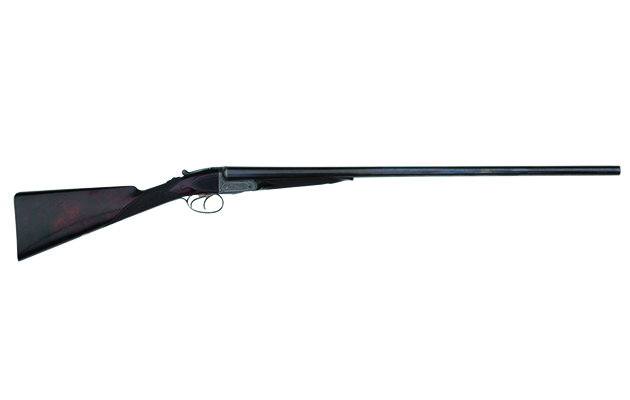The first Anson & Deeley Boxlock
This revolutionary gun illustrates the contribution A&D made to rearms design, says Lewis Potter

The Anson & Deeley (A&D) boxlock was a revolution in design that changed forever the world of the side-by-side shotgun. Simple and sturdy with a minimum of parts, it is still in production today by different makers, more than 140 years after the original patent was filed. The subject of this article is a special example because it was the very first Anson & Deeley boxlock.
The origins of Anson & Deeley
It is amazing to consider, from the perspective of the 21st century, that the A&D boxlock was conceived in a world still very much dominated by the hammergun. Yet it was the arrival of the box lock that signalled the eventual end for the older design. In time, the boxlock replaced it as the “industry standard everyman” double-barrel shotgun, and became the basis for top-of-the-market examples with splendid decoration and fine walnut.
The origins of the A&D boxlock go back to a patent of 11 May 1875, which is credited to William Anson, foreman of Westley Richards’ gun action department, and John Deeley, the managing director. This gun, number 5056, bears the simple inscription “the first Anson & Deeley hammerless gun”, but in its early days it was also known as a body lock, because the lock work is inside the action body. Such is the strength of the design that it also became the basis for large-calibre double rifles.

The inscription is clearly visible on the action body
First of its kind
A general description of this gun would be a double-barrel 12-bore, boxlock, double-trigger non-ejector gun, which, in real terms, hardly does credit to what is a historic gem. It sports 30in Damascus barrels and Westley Richards’ unique top lock operated by a top-lever that pivots on the right-hand side to draw back the locking bolt. Relying only on the top-locking system, the under barrel single lump is a simpler arrangement to later guns.
The lock work follows the now familiar pattern with pivoted cocking dogs engaging with the fore-end knuckle and hammers, the latter powered by short vee springs, with the sear arms extending back across the trigger-plate. Apart from pins and springs, there are essentially only three major moving parts to each lock.
Externally, there are some styling differences to later boxlocks. The eye-catching chequered panels at the head of the stock were very much in vogue at the time and the subtle step in the fore-end add up to give a slightly dated, if charmingly period, look. Most noticeable, though, is the pronounced curve of the top strap, which gives an almost round-shouldered look to the gun behind the slim fences.
As for choke, there isn’t any, possibly because at that time it was only just coming into use, or perhaps John Deeley, as the first owner, preferred a cylinder-bored gun. After all, in spite of Greener’s enthusiasm for choke, there was the counter argument that “choke lengthens your reach but lightens your bag”.
A twist in the tale
There is an interesting twist to this story, which only becomes clear by reference to Westley Richards’ production records. As it states on the gun, it is the first, certainly to be started, and number one of that design, though other production work took precedence in 1875 and this gun of Mr Deeley’s was not completed until 1879. Apart from that intriguing little snippet, consider what the shooting world would be like without the efforts of Messrs Anson and Deeley; their impact was truly great.
What to look for when buying an Anson & Deeley boxlock at auction
Barrels: with Damascus-barrelled blackpowder guns it is always necessary to check for pitting or corrosion, especially along the original weld lines where the twisted ribands are forged together.
Action: always check any break-open gun for the barrels being tight on the action with the fore-end removed.
Weight: Westley Richards’ early game guns tended to be light; this one weighs 6lb 13oz.
Value: It is what a collector might pay for a unique gun that made firearms history. Years ago at auction it sold for around £7,000, thought to be a bargain at the time.








